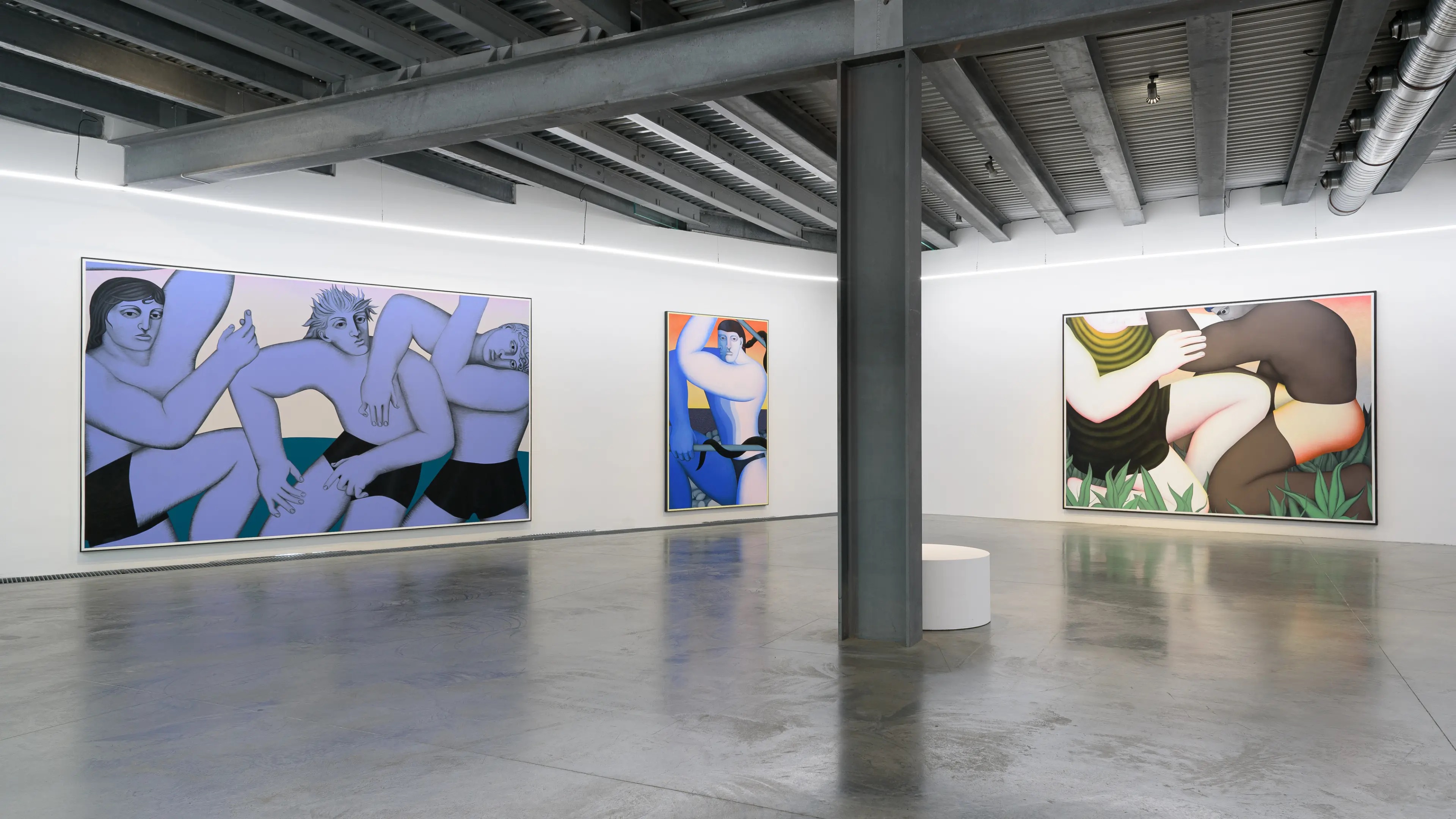Review „Vojtěch Kovařík: From Lines to Matter“
October – December 2024 –art magazine Flash Art (Czech & Slovak edition)
print no. 73 “Festivals”

ENG translation
After five years, the Czech public had the opportunity to be embraced by the monumental works of Vojtěch Kovařík. For the artist, this is only his second solo exhibition in a non-commercial space in the last few years. The first, and I dare say the most well done, took place at The Power Station in Texas. The Prague and Dallas projects were preceded by exhibitions at the Mendes Wood and Galerie Derouillon branches of Kovařík's home galleries. The Kampa Museum's summer blockbuster, curated by Martina Vítková, featured nine large-scale canvases, two reliefs and one sculpture. The accompanying texts and explanations of each work do not bring much new to those familiar with Kovařík's work and Petišek's retelling of Greek mythology.

They talk about myths, heroes, drawing (sometimes even graphic) lines, the syncretization of antiquity and modernism with soft airbrush gradients adopted from the digital environment. The collage-like quality of the exhibited works, in addition to the artist's typical use of high-contrast colours, is also supported by the use of sand, which achieves different textures and reduces the flatness that is sometimes accentuated by too sharp lines after the tape is removed. The meaning content of the works is well understood and, together with the form, which has settled down and somehow "cleaned up" and "gotten serious", works well when transferred to smartphone screens - here the gold-plated Theia is a case in point. But is there another reason why Kovařík's works appeal so much to contemporary society, without resorting to a straightforward interpretation of the various gambits of fate and chance even in the lives of such greats as goddesses and gods?

In Nietzsche's words, although similar ideas had been expressed earlier by Hölderlin and Creuzer, tragic Greek culture “heals” through the meeting of the Apollonian and Dionysian principles. This principle took shape in the early Romantic period as a rebellion against Enlightenment rationalism and scientific optimism. It showed that when culture becomes stuck in a one-sided belief in reason, there is inevitably a “disenchantment of the world” – a disintegration of metaphysical certainties, a loss of orientation, and an uprooting of man into a life without authentic belonging. Perhaps we can observe a similar crisis today, when romantic echoes are again gaining strength, especially in the field of contemporary figurative art. And perhaps this society-wide mood of generations who seem lost in their own rationality and technological progress, while searching for connection and justification of their lives, is captured at the right time by the youngest artist ever to have a solo exhibition at the Kampa Museum. For a moment, the shadows of his figures offer a place where man is not abandoned by the “gods”.
